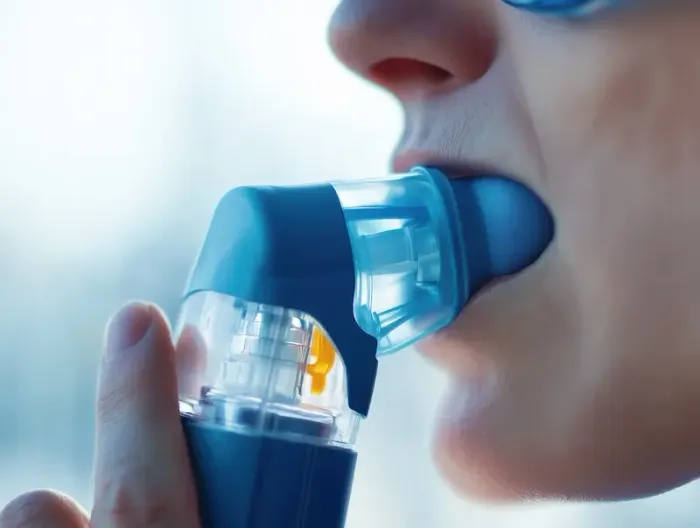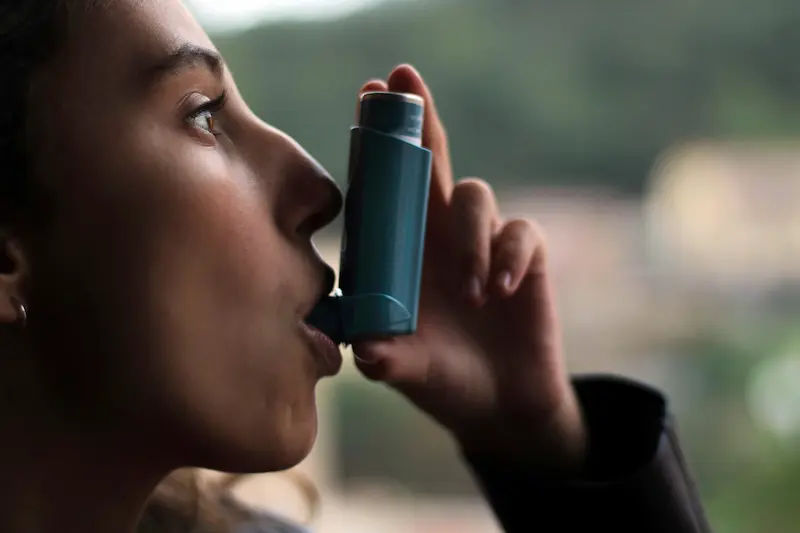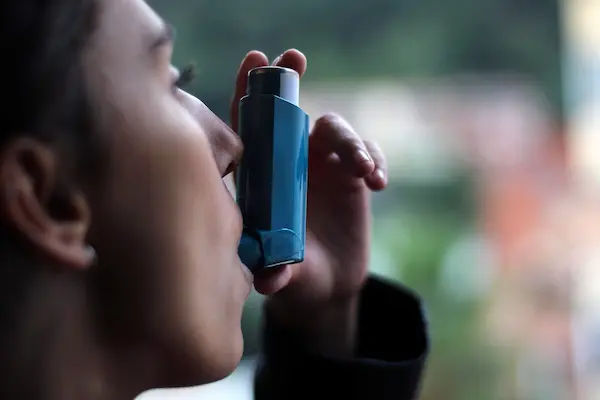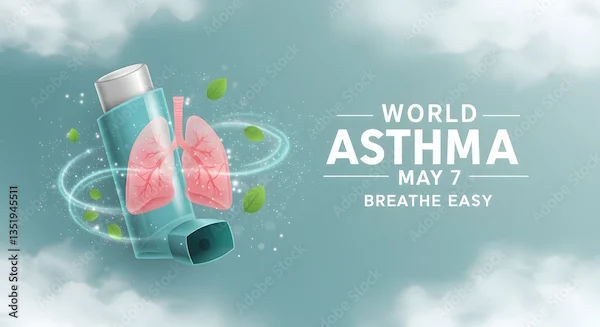Breathe Easier: Your Guide to Asthma Triggers and Relief Strategies
Discover how to identify asthma triggers and manage symptoms effectively with practical breathing techniques and expert-backed relief strategies for easier, healthier living.


Introduction
Living with asthma can feel like your lungs have a mind of their own. One moment you're fine, and the next, a simple walk in the park or a dusty room can leave you wheezing and struggling for air. But what if you could predict and prevent these episodes? Understanding the specific factors that aggravate your asthma is the first step toward taking back control. This comprehensive guide is designed to empower you. We will move beyond a simple list of triggers and delve into practical, in-depth strategies for management. From identifying hidden allergens in your home to mastering breathing techniques that can calm your airways during the early signs of an attack, this article provides a holistic toolkit. Whether you're newly diagnosed or have been managing asthma for years, you'll find actionable advice to help you breathe easier and live a fuller, more active life. Let's explore how to build a personalised plan that works for you.
The Culprits: A Deep Dive into Common Asthma Triggers
An asthma trigger is anything that irritates your airways and leads to asthma symptoms. These triggers cause the airways to become inflamed, swollen, and filled with mucus, while the muscles around them tighten. This combination narrows the airways, making breathing difficult. Triggers vary significantly from person to person, making personalised identification crucial.
Allergens: The Usual Suspects
For many, asthma is an allergic condition, meaning the immune system overreacts to typically harmless substances.
Dust Mites and Pet Dander
These are leading causes of indoor allergies. Dust mites are microscopic bugs that thrive in bedding, upholstered furniture, and carpets. Their droppings are a potent trigger. Similarly, proteins found in the skin flakes (dander), saliva, and urine of furry pets like cats and dogs can provoke symptoms. A 2020 study highlighted that over 50% of asthmatic children are sensitised to common indoor allergens like dust mites.
Pollen and Mold Spores
Seasonal allergens like pollen from trees, grasses, and weeds can be a major problem. Mold spores, which flourish in damp areas like bathrooms and basements, are another common trigger year-round. Keeping track of local pollen counts and reducing indoor humidity below 50% are key strategies for managing allergic asthma.
Irritants in the Air We Breathe
These substances don't cause an allergic reaction but directly irritate the sensitive airways.
Tobacco Smoke and Air Pollution
Tobacco smoke is a powerful irritant and a major risk factor for developing asthma and worsening its severity. Secondhand and thirdhand smoke (residue on surfaces) are equally harmful. Outdoor air pollution, including ozone and particulate matter from vehicle exhaust, is also a significant trigger. On high-pollution days, it's wise to stay indoors as much as possible.
Strong Chemical Fumes and Fragrances
Everyday products like household cleaners, paints, hairsprays, and perfumes can contain volatile organic compounds (VOCs) that irritate the airways. Opting for fragrance-free and naturally derived cleaning products can make a substantial difference in creating an asthma-safe home environment.
Physical and Environmental Factors
Exercise-Induced Bronchoconstriction (EIB)
Many people with asthma experience symptoms during or after physical activity. This is known as exercise-induced bronchoconstriction. Interestingly, exercise is also beneficial for lung function. The key is management: using a reliever inhaler 15 minutes before exercise and warming up properly can often prevent EIB.
Cold Air and Weather Changes
Breathing in cold, dry air can cause the airways to constrict. Sudden changes in weather, thunderstorms (which can break up pollen particles, making them easier to inhale), and high humidity can also be triggers. Wearing a scarf over your nose and mouth in cold weather can help warm and humidify the air before it reaches your lungs.
The Mind-Body Connection: Stress and Emotions
Strong emotions like stress, anxiety, fear, and even hearty laughter can lead to rapid breathing (hyperventilation), which can, in turn, tighten airways and trigger symptoms. While asthma is not a psychological condition, managing stress through techniques like meditation, yoga, or therapy is a vital part of a comprehensive management plan. Learning breathing exercises for shortness of breath can be particularly helpful in these situations.
Consult a Pulmonologist for the best advice
Master Your Breath: Breathing Techniques for Asthma Control
While medication is essential, breathing techniques can be powerful complementary tools. They can help improve lung function, reduce hyperventilation, and increase your sense of control during moments of breathlessness.
Diaphragmatic Breathing (Belly Breathing)
This technique focuses on engaging the diaphragm, the most efficient breathing muscle. It promotes slower, deeper breaths, which can reduce the work of breathing.
How to do it: Sit or lie down comfortably. Place one hand on your chest and the other on your belly. Inhale slowly through your nose, feeling your belly rise. Your chest should remain relatively still. Exhale slowly through pursed lips, feeling your belly fall. Practice for 5-10 minutes daily.
Pursed-Lip Breathing
This is one of the simplest and most effective strategies to use when you feel short of breath. It helps keep the airways open longer, allowing more stale air to escape.
How to do it: Inhale slowly through your nose for two counts. Pucker your lips as if you're about to whistle. Exhale slowly and gently through your pursed lips for four counts (or twice as long as your inhalation).
The Buteyko Breathing Method
This method, developed by a Ukrainian doctor, emphasises nasal breathing and reducing breathing volume. Some studies, including one published in the Journal of Asthma, have shown it can improve asthma symptoms and reduce the need for reliever medication. It involves exercises designed to increase your "control pause" (the time you can comfortably hold your breath after an exhalation). It's best learned from a certified instructor.
When to Seek Help: Recognising an Asthma Emergency
Despite our best efforts, asthma can sometimes become severe. It's critical to recognise the signs of a serious attack and seek immediate medical attention. Warning signs include:
Rapid worsening of shortness of breath or wheezing.
No improvement after using a quick-relief (rescue) inhaler.
Shortness of breath even while resting.
Difficulty speaking in full sentences.
Lips or fingernails turning blue or gray.
If you or someone you know experiences these symptoms, do not wait. Seek emergency care immediately. For ongoing management, if you find your symptoms are disrupting your sleep or daily activities more than twice a week, it's a sign that your asthma is not well-controlled. Consulting a doctor online with Apollo24|7 can help you adjust your action plan for better long-term control.
Conclusion: Empowering Your Respiratory Health
Asthma is a chronic condition, but it is also highly manageable. By shifting your focus from simply reacting to symptoms to proactively understanding your triggers and mastering control strategies, you can reclaim your quality of life. This journey involves a partnership between you and your healthcare provider, a commitment to your medication plan, and the daily practice of lifestyle habits that support lung health. Remember, the goal is not just to avoid attacks, but to breathe freely and fully, allowing you to engage in the activities you love without fear. Start by implementing one or two changes from this guide, such as identifying your top trigger or practicing a new breathing technique. Small, consistent steps lead to significant, lasting results. If your condition does not improve after trying these methods, book a physical visit to a doctor with Apollo24|7 for a comprehensive evaluation and personalised treatment plan.
Consult a Pulmonologist for the best advice
Consult a Pulmonologist for the best advice

Dr. P Sravani
Pulmonology Respiratory Medicine Specialist
3 Years • MBBS, MD
Visakhapatnam
Apollo Clinic Vizag, Visakhapatnam

Dr Rakesh Bilagi
Pulmonology Respiratory Medicine Specialist
10 Years • MBBS MD PULMONOLOGIST
Bengaluru
Apollo Clinic, JP nagar, Bengaluru

Dr. E Prabhakar Sastry
General Physician/ Internal Medicine Specialist
40 Years • MD(Internal Medicine)
Manikonda Jagir
Apollo Clinic, Manikonda, Manikonda Jagir
(150+ Patients)

Dr. K Prasanna Kumar Reddy
Pulmonology Respiratory Medicine Specialist
16 Years • MBBS, DTCD (TB&CHEST), DNB (PULM MED), FCCP
Hyderabad
Apollo Medical Centre Kondapur, Hyderabad

Dr Vishwa Vijeth K.
Pulmonology Respiratory Medicine Specialist
8 Years • MBBS, MD ( Respiratory Medicine)
Bangalore
Apollo Clinic Bellandur, Bangalore
Consult a Pulmonologist for the best advice

Dr. P Sravani
Pulmonology Respiratory Medicine Specialist
3 Years • MBBS, MD
Visakhapatnam
Apollo Clinic Vizag, Visakhapatnam

Dr Rakesh Bilagi
Pulmonology Respiratory Medicine Specialist
10 Years • MBBS MD PULMONOLOGIST
Bengaluru
Apollo Clinic, JP nagar, Bengaluru

Dr. E Prabhakar Sastry
General Physician/ Internal Medicine Specialist
40 Years • MD(Internal Medicine)
Manikonda Jagir
Apollo Clinic, Manikonda, Manikonda Jagir
(150+ Patients)

Dr. K Prasanna Kumar Reddy
Pulmonology Respiratory Medicine Specialist
16 Years • MBBS, DTCD (TB&CHEST), DNB (PULM MED), FCCP
Hyderabad
Apollo Medical Centre Kondapur, Hyderabad

Dr Vishwa Vijeth K.
Pulmonology Respiratory Medicine Specialist
8 Years • MBBS, MD ( Respiratory Medicine)
Bangalore
Apollo Clinic Bellandur, Bangalore
More articles from Asthma
Frequently Asked Questions
1. Can asthma be cured?
Currently, there is no cure for asthma. However, it can be effectively managed with proper treatment and lifestyle adjustments, allowing most people to live active, normal lives with minimal symptoms.
2. What is the difference between a preventer and a reliever inhaler?
A preventer (controller) inhaler is used daily to reduce inflammation in the airways and prevent symptoms from occurring. A reliever (rescue) inhaler is used as needed to quickly relax the muscles around the airways during an asthma attack.
3. Are there any natural remedies for asthma?
While some natural approaches like breathing techniques and avoiding triggers can support management, they should never replace prescribed medication. Always discuss any supplements or alternative therapies with your doctor, as some may interact with your treatment.
4. How can I tell if my child's asthma is well-controlled?
Signs of good control include: they can participate in normal play and sports, they sleep through the night without coughing or wheezing, they rarely need their reliever inhaler, and they don't miss school due to symptoms.
5. Is it safe to exercise if I have asthma?
Absolutely. Exercise is beneficial for overall health, including lung function. The key is to ensure your asthma is well-controlled. Using your reliever inhaler before exercise and choosing activities that are less likely to trigger symptoms (like swimming in a warm, humid environment) can help.




